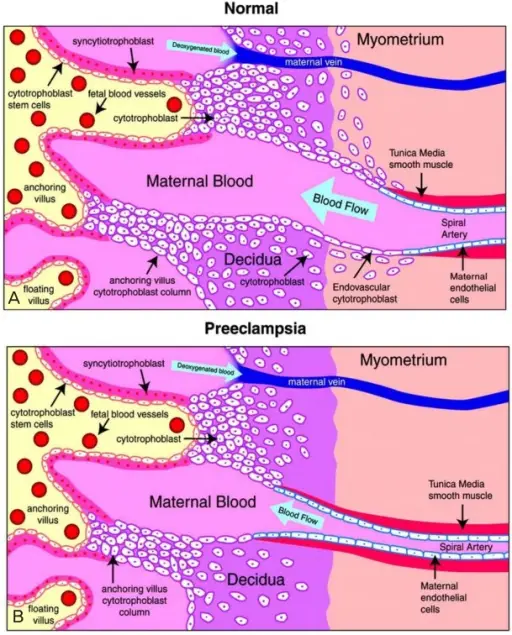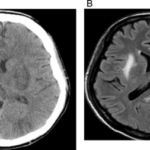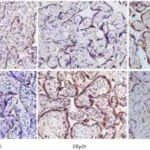Preeclampsia is a condition with high blood pressure in pregnant women.
What is the Pathology of Preeclampsia?
The pathology of preeclampsia is:
-Etiology: The cause of preeclampsia is unknown.
-Genes involved: None.
-Pathogenesis: The sequence of events that lead to preeclampsia include defective spiral artery remodeling.
-Histology: The histology associated with preeclampsia shows placenta with villous ischemia (increased syncytial knots, thickening of trophoblastic basement membrane, villous hypovascularity, villous agglutination, and infarction), fibrinoid necrosis of uterine vessels and acute atherosis; more tortuous or densely distributed spiral and basal arteries than normal.
How does Preeclampsia Present?
Patients with preeclampsia typically affect females present at the age range of less than 20. The symptoms, features, and clinical findings associated with preeclampsia include protein in the urine, swelling in the legs, feet, and hands, weight gain, shoulder pain, belly pain, trouble breathing, and vision changes.
How is Preeclampsia Diagnosed?
Preeclampsia is diagnosed by high blood pressure and also proteinuria, low platelet count, pulmonary edema.
How is Preeclampsia Treated?
Preeclampsia is treated by establishing a patent airway and ensuring maternal oxygenation, prophylaxis, and BP management by labetalol.
What is the Prognosis of Preeclampsia?
The prognosis of preeclampsia is good with full recovery in a few days or months.



